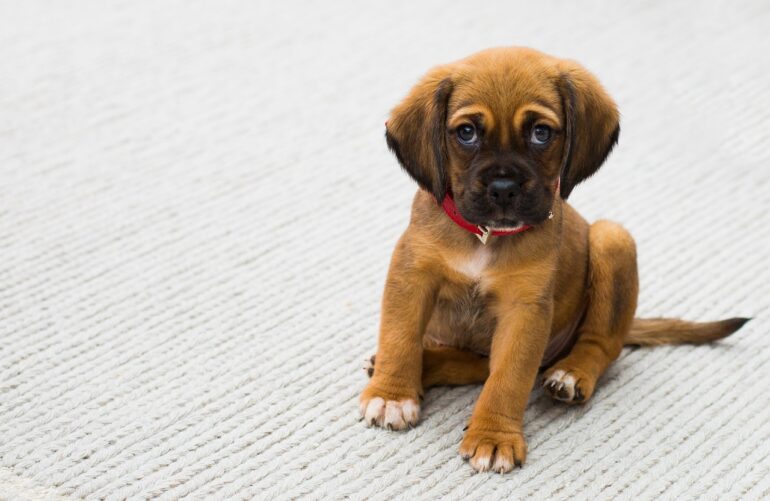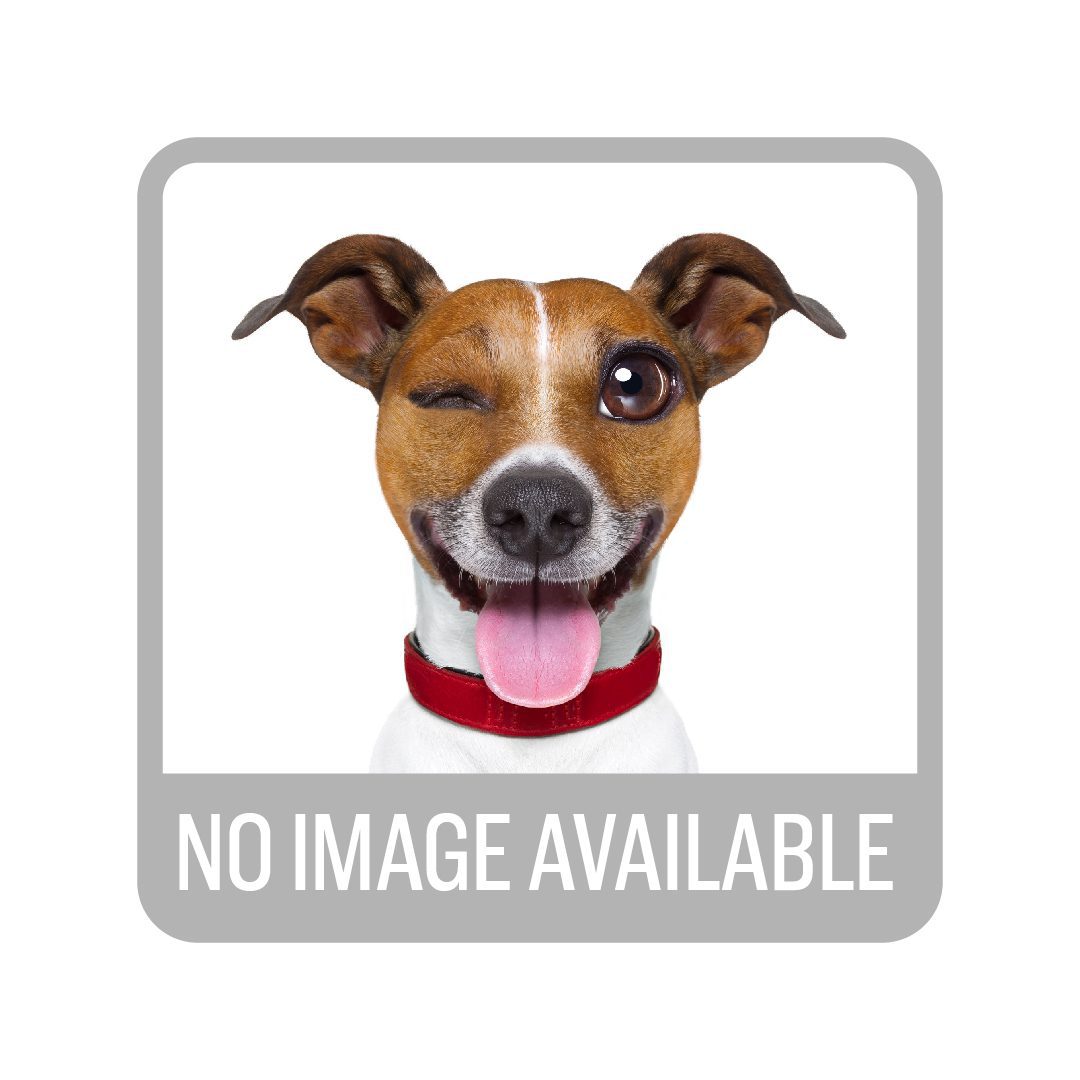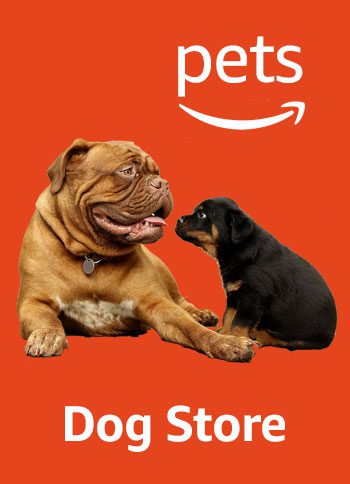The arrival of a puppy in the house is a joyous event for loving owners, but it also brings new responsibilities that one should be prepared for. One such responsibility is training the pet to go to the toilet in the right place. How to train a puppy to use a pad, when to start training, and what methods can be used? It all depends on many factors, but the main guide in this matter is the age of the pet. In this article, we will explore how to help the puppy get used to the pad considering its age and how to eventually train it to go outside.
What do you need to know before training?
Your pet has basic needs, including needs for food and water, care, preventive procedures, sleep and rest, and the ability to comfortably go to the toilet. Special puppy pads, with an absorbent effect, can be reusable, meaning they can be used again after washing, and disposable – The Best Puppy Pee Pads. They are made from soft, tactilely pleasing materials that retain odor. Let’s understand how to train a puppy to go to the toilet, to pee and poop on the pad, and consider what types of ‘toilets’ there can be and how to choose the right products.
For small dog breeds, which can be trained to go to the toilet only at home, a tray can be immediately purchased. It may be useful if a small-sized puppy, such as a Toy Terrier, Maltipoo, Yorkshire Terrier, or Chihuahua, has appeared in the house. There is a wide variety of trays, for example, with a post for males or a fabric holder. For each pet, you can choose the optimal toilet, the main thing is the right size.
It is important for the owner to understand that the younger the puppy, the shorter the intervals between toilet visits. However, too frequent urges in small portions may also indicate a problem, so if you are concerned about the frequency and volume of the puppy’s urination, it is better to visit a veterinary specialist.
Auxiliary Tools for Training
A pet will more quickly adapt to hygiene rules if you use special sprays that either attract or repel them — helping to draw them to the toilet or to mark areas unsuitable for that purpose. The attractive spray is applied to the pad twice a day and presented to the puppy to smell. Its scent attracts the animal, making it more likely to go on the fabric rather than the floor. The repelling spray’s smell is disliked by the puppy, so the areas treated with it remain clean.
Both types of sprays should be chosen experimentally from the wide variety available. You can also consult a veterinarian or animal behaviorist for the most optimal option.
Using these tools is not obligatory. More important are the actions aimed at ensuring the pet knows where to relieve itself.
Now, let’s move to the practical aspect of how to train a dog to use a pad in an apartment so that your beloved puppy goes to the toilet in the right place.
Training a Puppy at 1 Month
At the age of one month, a pet cannot yet control processes such as urination or defecation — sometimes it involuntarily relieves itself in inappropriate places. Do not get upset, scold or punish it; this will only frighten and hinder adaptation.
To train a puppy to use a pee pad at 1 month, you should:
- Remove soft coverings, newspapers, books, and other items from the floor that the animal might mistake for a toilet area.
- To prevent injuries, ensure that the surface the pet runs on is not slippery. You can cover the floor with a covering that is easy to clean from dirt.
- Spread pads in various places of the room where the animal is located. Dogs prefer secluded corners: next to the door, window, furniture, or walls. Make sure there is no draft in this area.
- Observe the pet. It may prefer the same spot in the house as a toilet — that’s where you should place a clean pad.
At this stage of development, the pet may sometimes go to the toilet wherever it happens. Sometimes it’s more practical to cover the entire surface the puppy moves on with pads.
How to Train a Puppy to Use a Pad at 2 Months?
At two months old, the need to relieve itself becomes slightly less frequent in pets. Therefore, training in hygiene requires adherence to slightly different rules:
- Some pads can be removed, leaving them only in certain areas of the room. The owner decides where to place the hygienic pad, keeping in mind the puppy’s comfort.
- Follow a routine. At two months, pets often need to use the toilet after eating, sleeping, or playing, so it becomes easier for the owner to choose the right time to take the puppy to the pad.
- Use a safe spray with a repelling scent if the animal persistently relieves itself in an inappropriate place. Before this, the floor should be thoroughly cleaned, but do not use products containing bleach.
- You can place food and water bowls in areas where the toilet is undesirable. Typically, animals do not relieve themselves where they are fed.
At 2 months, it’s normal for a puppy to still make mistakes. Punishing the dog for these is not appropriate, but rewarding for successes is necessary. Problems with choosing a toilet spot will occur less frequently than they did four weeks ago.
How to Train a Puppy to Use a Pad at 3 Months?
Three months is the optimal age to bring a puppy home from the breeder. By this time, it has been vaccinated and gained initial understanding of toilet rules.
At this stage, training the puppy to use a pad involves a few simple steps:
- You need to place it on the designated toilet pad after eating, sleeping, and playing;
- Any puddles left in other places should be immediately cleaned up and the area treated with a special spray that eliminates animal odors;
- If you catch your pet going to the toilet in an inappropriate area, you can immediately move it to the pad to show where it’s acceptable to go;
- If your pet relieves itself in the wrong place, you can dampen a paper towel with its urine and place it on the pad, so the puppy associates the toilet’s smell with that spot.
It’s not appropriate to rub the dog’s nose in the puddle, to shout, or to punish in any way. Fear will hinder its ability to learn hygiene rules, force it to hide when its bladder is full, and seek out hard-to-reach places in the apartment.
This could lead to the puppy going to the toilet in inappropriate places.
The animal is not yet ready to go to the toilet outside. Unfamiliar surroundings will make it wary. Acclimating to the outdoors should start by carrying the puppy outside for short periods (remember: you can only take it out after a full course of vaccinations). However, at home, you can gradually introduce your pet to a collar, leash, and muzzle.
Training to Use a Pee Pad at 4 Months
At this age, the pet can control the urge to go to the toilet. To train a dog to use a pad, you should:
- Lay a couple of hygienic devices on the floor in places convenient for the owner and accessible to the pet;
- Reward the puppy after each successful trip to the toilet;
- Clean up excrements if the growing puppy mistakes the place for a toilet, and do not punish it.
At 4 months, the animal can be offered to use a tray if you plan to continue using an indoor toilet. This is applicable for miniature breeds such as Pomeranian, Maltese, Pekingese, Chinese Crested, etc. It’s better to put a pad inside the tray to keep the toilet comfortable and prevent the animal from looking for another spot. You can use a soft filler.
Also, at 4 months, you can start going outside on a leash. Initially, choose places with fewer people and animals. To help the pet understand why it was taken out, bring a used pad on the walk.
How often should the pad be changed?
The frequency of changing the pad depends on its type and the age of the pet. Disposable hygienic devices are thrown away as soon as the fabric becomes dirty. If the animal is less than 4 months old, you can leave a pad with its urine scent in the room to help it orient.
Reusable pads should be washed in the machine with baby detergent or dog soap. Make sure the pet does not develop an allergy to the cleaning agent. For a puppy’s toilet, a dry pad is needed, so there should be many reusable hygienic devices.
If the puppy defecates, clean up immediately to avoid the risk of developing undesirable behavior like coprophagia (eating feces).
Why Doesn’t the Puppy Use the Pee Pad?
Here are some possible reasons why your pet ignores hygienic devices:
- The fabric is too dirty, and the strong smell bothers the animal. This often happens after reaching 4 months of age.
- Possibly, it can’t reach the designated spot in time due to its age. Training the puppy to go to the toilet on the pad will be easier if you cover the entire floor of the room where the puppy stays with pads.
- The puppy has limited opportunities for development and play. In this case, it may perceive the pad as a toy, tearing it to shreds, and go to the toilet next to it. More suitable items for the puppy, such as balls and toys, can help correct this situation. The owner should interact more with the pet to ensure optimal cognitive development.
- The puppy simply has a mischievous character. Because of this, it may chew the pad despite having plenty of toys. Here, it’s better to use reusable hygienic devices that are harder to tear apart. And treat the fabric with a special spray to make it less appealing for the animal to taste.
Even very smart and obedient pets occasionally ‘make puddles’ in inappropriate places. This happens not from a desire to misbehave but because the habit of order has not yet formed due to their age.
Training a Dog to Go Outside After Using a Pad
The owner should ensure that all necessary vaccinations and anti-parasitic treatments have been completed before taking the pet outside and also gradually get it accustomed to a collar/harness and leash. The dog will wean off the pad faster and start relieving itself during walks by doing the following:
- Take it outside after the pet eats or sleeps. Most animals feel the need to empty their bowel or bladder after eating or sleeping.
- Initially, bring the familiar pad and toilet training spray outside. Grass, soil, or sand might not be immediately appealing after soft fabric, so the transition should be gradual.
- With each walk, reduce the size of the pad to get the animal used to going without it. The spray can be used a bit longer.
- Gradually phase out the use of the pad at home too. If you take the dog out every hour, it will quickly learn to ask to go outside instead of waiting.
- When the pet is getting ready to go or already doing its business, do not distract it with play or other commands.
- Praise and reward it if it completes the task.
- If the pet does not seem inclined to relieve itself outside, return home. After 20-30 minutes, try going for a walk again.
The dog should be fed on a regular schedule, and there should always be a bowl of water available. The animal needs sufficient physical activity, sleep, interaction, and a calm environment. Following a routine will make the adaptation to toilet habits quicker and easier.
If these recommendations do not help your pet adapt to using the toilet, it may have health issues with its urinary or nervous system. In this case, show it to a veterinary specialist without waiting for it to get older.
Training a Puppy to Use a Pad – Key Points
- Specialized sprays with attractive or repelling scents are auxiliary tools that owners use at their discretion.
- From the age of 1 to 4 months, the animal needs to empty its bowel and bladder at different frequencies – this determines the method of training.
- To train a puppy to use a pad, first remove everything it might mistakenly take for a toilet spot.
- Use many pads, gradually decreasing their number.
- Place the puppy on the pad after eating, sleeping, and playing.
- Praise the pet when it does everything correctly, and don’t scold you for mistakes.”




